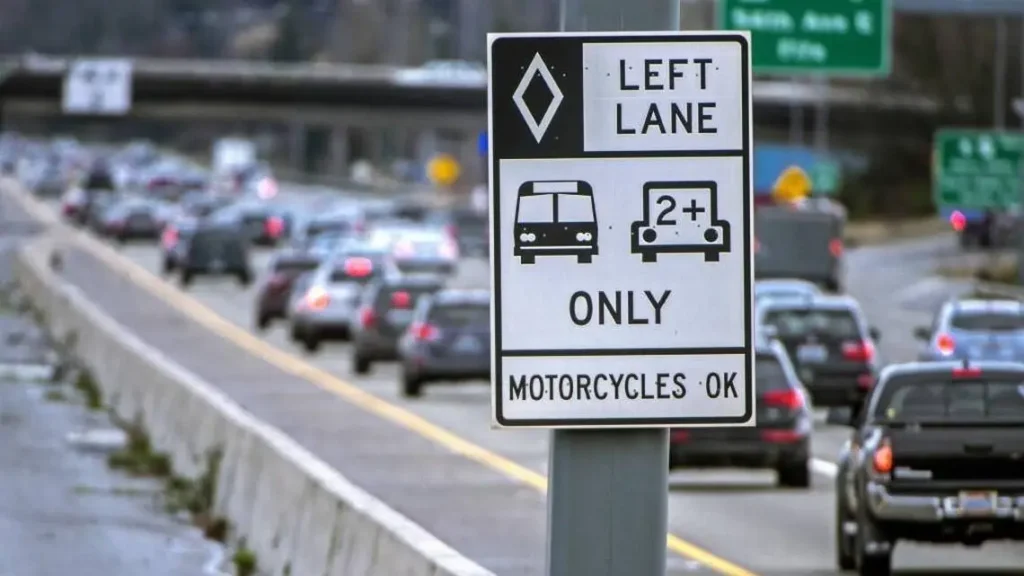Exiting the freeway involves several critical decisions and maneuvers that require precision and careful execution.
Freeway intersections, also known as on-ramps, are important points where drivers transition from fast-moving traffic to slower local roads.
Key Factors of freeway driving
In this mapping, we explore key considerations and best practices for safe freeway exits, including factors such as signs, speed control, merging and the overall exit strategy.
1. Announcing intentions:
The first step in leaving the highway is to announce your intentions to other drivers. Activate the turn signal well before the exit to signal that you are about to exit the freeway. That way, drivers behind you and in adjacent lanes can anticipate your movements and adjust their driving style accordingly. Consistent and clear directions are essential to keep traffic flowing and avoid last-minute lane changes that lead to dangerous situations.
2. Check exit signs and lanes:
Before reaching the exit, pay attention to the exit signs indicating the next exit. Make sure you are in the right lane well before the exit point. Many highways have multiple lanes, and not having the right lane can cause sudden movements, causing traffic jams and potential hazards. Regularly checking exit signs and road markings will keep you informed and allow for a smoother transition to the ramp.
3. Speed control:
A gradual reduction in speed is an important part of preparing to leave the highway. Sudden braking can hit the drivers behind, resulting in a rear-end collision. As you approach the ramp, begin to slow down steadily and in a controlled manner. Adhering to posted speed limits ensures a safe exit, as it allows for easy navigation of off-ramp curves and potential intersections.
4. Safe merging:
Merging on a ramp requires an accurate understanding of traffic conditions. Before merging onto the ramp, check your mirrors and blind spots to make sure there are no vehicles in your immediate vicinity. Follow oncoming traffic and adjust your speed to seamlessly blend in with the flow of vehicles exiting the freeway. Safe merging is a shared activity that requires awareness and consideration of other drivers.
5. Stay in designated lanes:
Exit ramps often have multiple lanes leading to different destinations or intersecting local roads. Pay attention to the designated lanes for your chosen exit. Avoid last-minute lane changes and confusion by staying in the appropriate lane well in advance. If multiple exits share a single off-ramp, ensure you are in the lane corresponding to your desired destination.
6. Yielding Right-of-Way:
At the end of the off-ramp, you may encounter intersections, stop signs, or traffic signals. Always grant privileges as needed. This can mean stopping at a stop sign, yielding to oncoming traffic, or obeying traffic signs. Following the traffic rules and yielding if necessary ensures a smooth and safe transition from the highway to local roads.
7. Maintain a safe following distance:
When approaching a ramp, maintain a safe following distance from the vehicle in front of you. This gives plenty of room for sudden stops or possible adjustments. Exiting the freeway often requires a speed reduction, and a safe following distance reduces the risk of rear-end collisions. Considering traffic flows allows for a safer and more predictable exit.

8. Anticipation of traffic conditions:
Anticipation of traffic conditions is crucial for efficient highway intersection navigation. Check for traffic congestion, construction, or road closures that may affect your chosen ramp. Aware of potential obstacles or disruptions, you can plan, choose alternative routes if necessary, and make informed decisions as you approach the exit.
9. Night Considerations:
Hitting the road after dark presents additional challenges due to reduced visibility. Make sure your headlights are working properly and pay attention to exit signs and road markings. Adjust your speed to suit the conditions and use caution when merging onto the exit ramp. Greater awareness when driving at night promotes safer driving and reduces the risk of accidents.
10. Navigating complex intersections:
Some freeway intersections contain complex intersections where multiple ramps intersect. Navigating these difficult intersections requires special attention and careful lane selection. Pay attention to the signs, choose the right lanes in time, and consider other drivers at the same intersection. Staying in the marked lanes and following the marked lanes ensures a smooth transition at difficult highway intersections.
11. Use of Navigation Technology:
Modern navigation technology can be a valuable tool for navigating off-road. GPS systems and navigation applications provide real-time information about upcoming departures, route changes, and traffic conditions. Using these tools helps drivers plan an exit strategy, stay on track, and anticipate changes necessary due to the dynamic nature of traffic.
Conclusion:
Exiting the highway involves several conscious actions and considerations that contribute to the overall safety and efficiency of the road network. By announcing their intentions, checking exit signs and lanes, adjusting speed correctly, merging safely, and following traffic rules, drivers can navigate the ramp with confidence and consideration for other road users. Staying alert, especially in difficult conditions such as night driving or difficult intersections, ensures a smooth transition from the highway to local roads. Ultimately, successful highway exit negotiations are a shared responsibility that contributes to the overall harmony and safety of our roads.
